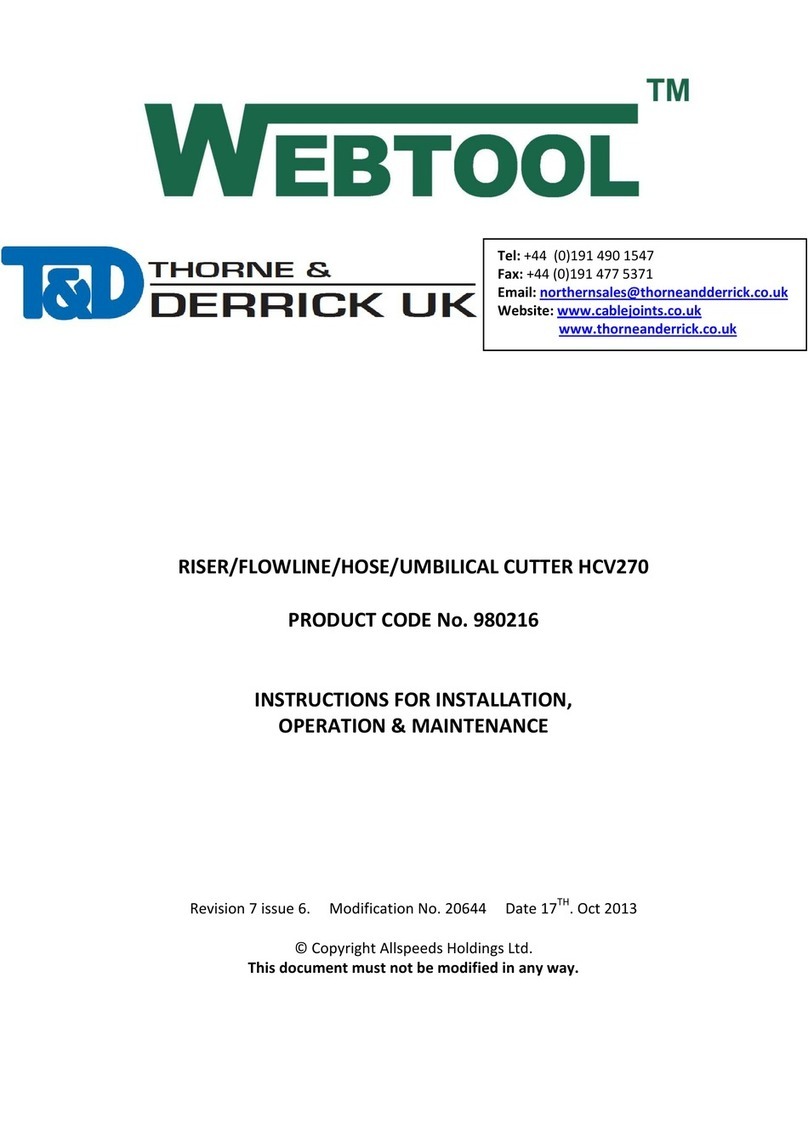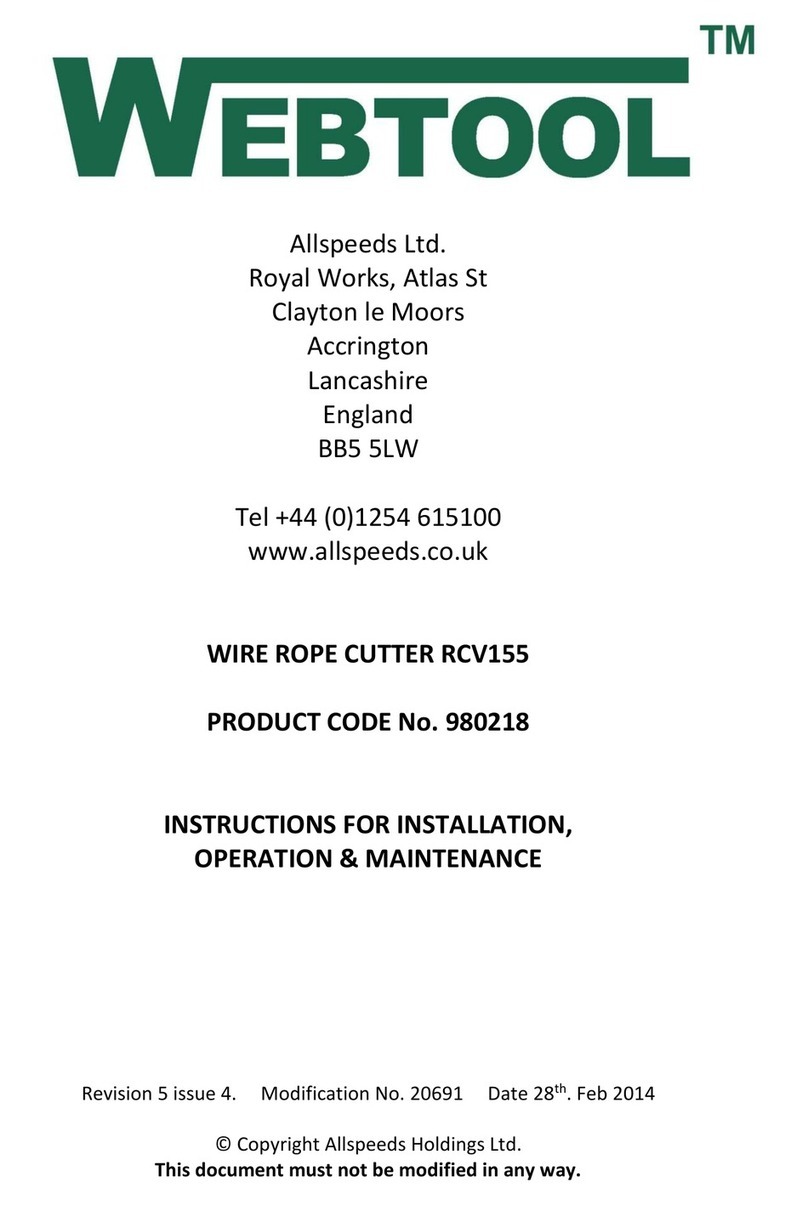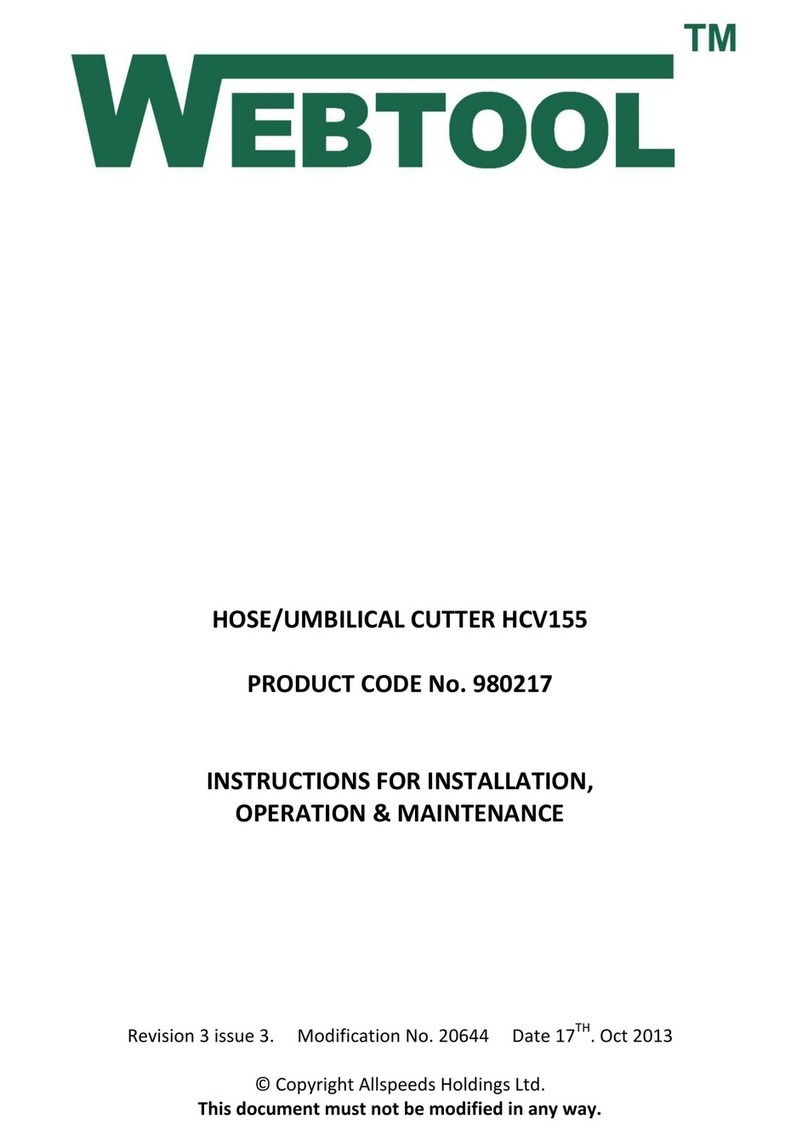980230 –RCV190 Manual Page 2 of 25
Rev 6 Issue 3. Date: 18/09/23
Table of Contents
1Important Notice –Read Before Use................................................................................... 3
2Introduction....................................................................................................................... 3
3Technical Data.................................................................................................................... 4
3.1 Physical......................................................................................................................................... 4
3.2 Hydraulic Requirements............................................................................................................... 4
3.3 Environmental Considerations ..................................................................................................... 4
3.4 Dimensions................................................................................................................................... 5
4Declaration of Incorporation............................................................................................... 6
5General Safety Rules .......................................................................................................... 7
5.1 Warnings....................................................................................................................................... 7
5.2 Important Information ................................................................................................................. 7
5.3 Safety for Operation..................................................................................................................... 7
5.4 Safety for Maintenance................................................................................................................ 8
5.5 Warning Symbols.......................................................................................................................... 8
6Installation......................................................................................................................... 9
6.1 Mounting Holes............................................................................................................................ 9
7Hydraulic Connections...................................................................................................... 10
8Operating Instructions...................................................................................................... 11
8.1 Before Use.................................................................................................................................. 11
8.2 Deploying the Tool ..................................................................................................................... 11
8.3 Pre-Cut Check............................................................................................................................. 12
8.4 Extend the Blade (Cut Cycle) ...................................................................................................... 12
8.5 Retract the Blade (Return Cycle) ................................................................................................ 12
9Maintenance.................................................................................................................... 13
9.1 Maintenance Notes.................................................................................................................... 13
9.2 Maintenance Schedule............................................................................................................... 13
9.3 Remove & Replace Anvil............................................................................................................. 14
9.4 Remove & Replace Blade............................................................................................................ 17
9.5 Seal Detail................................................................................................................................... 19
10 Parts List.......................................................................................................................... 22
11 Decommissioning............................................................................................................. 23































